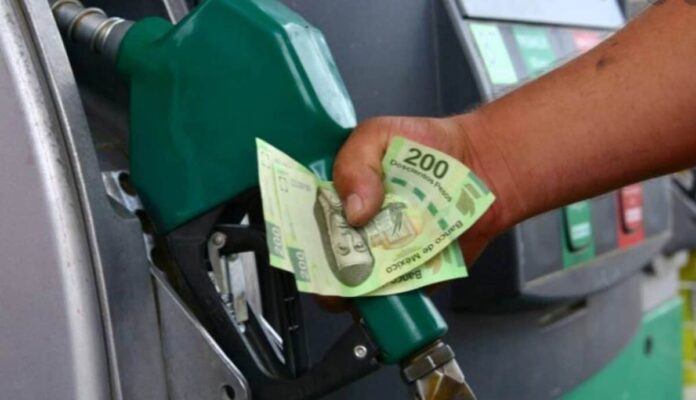Experts point out that the difference in the tax paid between the two countries is the main reason why gasoline is more expensive here; the IEPS is used to control fuel prices.
In Mexico, almost five times more taxes are paid on gasoline than in the United States, which causes the fuel to be 60.47% more expensive in our country, according to calculations made by this medium, based on public information.
For each liter of regular or Magna gasoline, 6.18 pesos of Special Tax on Production and Services (IEPS) are paid, 55 cents of state IEPS and around 3.54 pesos in Value Added Tax (VAT).
With this, in total 10.27 pesos are paid in taxes for each liter of regular or Magna gasoline. While in the United States, 2.06 pesos of taxes are paid for each liter of the same fuel.
According to data from the consultancy PETROIntelligence, the price of Magna gasoline in Mexico was quoted at 22.13 pesos per liter, on average, at the national level this Monday, January 22, that is, 46% of what consumers pay is for taxes.
In contrast, in the United States only 15% of what consumers pay for gasoline is taxes, according to data from the Energy Information Administration.
The gallon of gasoline at service stations in the United States sells for $ 3.058, according to the same source.
For each gallon of gasoline, $ 0.45 is paid in taxes in the neighboring country to the north ($ 0.18 in federal excise tax and $ 0.27 on average in state taxes).
Converted to pesos per liter, regular gasoline in the United States has a price at the national level of 13.79 pesos at service stations, 2.06 pesos is taxes.
According to Ramsés Pech, advisor on energy and economics, the difference in the amount of taxes paid between the two countries is the main reason why gasoline is more expensive in Mexico than in the United States.
Pech said that the federal tax in the United States is updated every six months, while in Mexico it varies every week depending on the fiscal stimulus applied by the Ministry of Finance and Public Credit (SHCP).
So far in 2024, the SHCP has not applied stimuli to either Magna or Premium gasoline.
Alejandro Montúfar, general director of PETROIntelligenece, explained that in Mexico the IEPS is used to control fuel prices to the final consumer.
For example, when in 2022 the international prices of oil and gasoline rebounded due to the war in Ukraine, the Ministry of Finance applied fiscal stimuli (that is, it charged less IEPS) and even gave a complementary subsidy to cushion the impact in Mexico.
Thanks to this, gasoline prices did not have historical increases as they did in the United States. Gasoline could have reached up to 28.83 per liter in June of that year, had it not been for the stimuli and subsidies, according to data from PETROIntelligence.
However, that same fiscal policy that prevented a rise in prices during 2022, prevented the price of fuels from falling last year, as it did in the United States, and that, on the contrary, they remained high.
“The collection of the IEPS did not allow the low prices that were seen internationally to be observed in 2023, this because the government had to recover the income used to prevent last year (2022) the price reached levels of 30 pesos per liter”, explained Montúfar.
In Mexico, regular gasoline rose 3.21% during 2023, while in the United States the fuel fell 2.37%, according to data from PETROIntelligence and the EIA.
State variations
The specialist also explained that in the neighboring country, state taxes vary, since some states charge much more than others, which causes the price of gasoline to be more expensive in some
Source: El Economista







